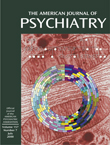Physician sexual misconduct is a general term that encompasses a number of boundary violations as well as overt sexual intercourse by a physician with a patient. This well-written and finely edited book runs the gamut of issues related to physician sexual misconduct. It is comprehensive in scope and sufficiently in-depth to be a meaningful and important addition to the literature.
The editors have enlisted the leading writers and researchers in this field to discuss, in an organized manner, the forensic issues, ethical and regulatory issues, preventive issues with physician education, and, finally, therapeutic and rehabilitative matters.
The initial section on forensic issues contains three chapters written by some of the most experienced clinicians in the field. Thomas G. Gutheil, M.D., current president of the American Academy of Psychiatry and the Law, has had extensive experience in examining cases involving physicians who have committed sexual misconduct. He writes on the civil issues in litigation, including malpractice cases. Larry H. Strassburger, M.D., who has written a number of papers involving sexual misconduct by therapists, writes on the criminal aspect of physician-patient sex, presenting it as a social policy dilemma. He notes that 16 states have enacted criminal statutes against physicians who sexually exploit their patients. Alan A. Stone, M.D., writes with Attorney Duncan C. McCourt on the insurance coverage for undue familiarity. These authors present conflicting social policy issues regarding limited insurance coverage in cases of physician sexual misconduct.
In addition to the forensic issues that are most obvious, there are also ethical and regulatory matters presented by well-known writers, including Elissa P. Benedek, M.D., discussing the ethical statements of APA and the American Medical Association. Dr. Bloom, one of the editors of the book, presents, with coauthors, a chapter on the role of the boards of medical examiners in various states when assessing sexual misconduct by members of the profession.
Section 4 deals with therapeutic and rehabilitative issues; various writers, including Drs. Glen O. Gabbard and Gene G. Abel, along with the other two editors, Drs. Notman and Nadelson, discuss treatment approaches for physician sexual misconduct. A particularly important chapter is written by three social workers from the Boston area who have studied sexual misconduct and the victim/survivor. They note that a number of former patients who have been sexually exploited prefer to be referred to as survivors because they don’t like the label of “victim.” Others choose to be called victims because they feel they have been victimized by the sexual abuse of their former therapist. One of the most poignant statements is found in the conclusion section of this chapter:
We do not believe that sexual abuse of patients by members of the health care professions is going to go away, and we believe that few, if any, perpetrators can be rehabilitated.…However, we believe that by sensitizing the overwhelming percentage of members of the health care professions who would not perpetrate such abuse, and by educating the consuming public, we can do much to slow the rate as well as to support those who fall victim to sex abuse.
In my opinion, that paragraph summarizes the dilemma of physician sexual misconduct. Other authors in this book have attempted to classify the types of abusers as well as the types of victims. They all reach the same conclusion—that there are many ways of categorizing perpetrators and victims, but, in essence, there is no clear category for each, and there is much variability in all classes.
Finally, there is a section on physician education in medical schools, residencies, and for the practitioner with the hope that sufficient education would decrease the likelihood of future physician sexual misconduct. It is important to note that the chapter authors indicate that some medical students may not believe that sexual contact with patients is wrong, unethical, or harmful to the patient.
In summary, this is a very important book that needs to be read by all practitioners and should be read by patients who believe they are involved in an inappropriate relationship with their therapist/physician. It is the most comprehensive work that I have read thus far, discussing a very difficult subject in a most professional and helpful manner.

